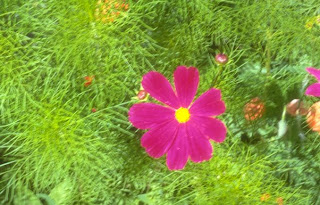
In the twelfth century production of sculptures continued to be as prolific as in the preceding one. It would therefore be very difficult to discuss even the century's masterpieces. Here only a few would be mentioned for a general appreciation of the Pala-Sena style in its final phase. The Varendra Research Museum preserves, among many others, some of the finest examples of the sculptures of this phase, including the image of Shiva, Sadashiva (fig 15), Surya, Kartikeya (fig 16), and Syama Tata - all coming from different districts of north Bengal. The Avalokiteshvara of the West Bengal State Archaeological Museum, and the Brahma and the Khasarpana Avalokiteshvara of the Indian Museum, and hailing from same north Bengal, are also remarkable examples of the art at its most matured expression. The development in the south Bihar was similar, so far as emphasis on ornamentation and fulsome figures are concerned, though a slight variation may however be noted in several figures showing longish forms with a sharp bend at the waist.
The Khasarpana Avalokiteshvara from Nalanda and now in the Nalanda Museum is an instance of the style. Other remarkable sculptures from the region revealing the style in its best are the bronze trinity of Buddha, Avalokitesvara and Maitreya, found at Fatepur, now in Bodhgaya Site Museum, and the Lokanatha from Kurkihar, and preserved in the Patna Museum. Two images, one of the Mahisasuramardini, from the Hoogly district in West Bengal, and in the Asutosh Museum, and the other of the Garuda, from Rajshahi and in the Indian Museum, are remarkable for their distinctive accent on the bold curvacious forms, possibly bearing the imprint of the Hoysala art of Karnataka.
After the Muslim conquest of Bengal in the early thirteenth century, the defeated Senas retreated to the east of river Padma, and lingered as a royal power in the eastern most part of the country till about the middle of the century. In spite of their loss of resources, the Senas continued to encourage the art of image carving. But from the viewpoint of style, nothing new emerged in the period. Thus ends the long and varied story of the Pala-Sena sculpture as a regional East Indian style of distinction, flourishing in the early medieval period. Significantly, however, the style of the art spread, hand in hand with the Mahayana-Tantrayana Buddhism, much beyond the Bengal borders to continue and develop in Nepal and Tibet in the north, Myanmar and Thailand in the east and Sri Lanka and Indonesia in the south. (16 of 16)
[Asok K Bhattacharya]
The Khasarpana Avalokiteshvara from Nalanda and now in the Nalanda Museum is an instance of the style. Other remarkable sculptures from the region revealing the style in its best are the bronze trinity of Buddha, Avalokitesvara and Maitreya, found at Fatepur, now in Bodhgaya Site Museum, and the Lokanatha from Kurkihar, and preserved in the Patna Museum. Two images, one of the Mahisasuramardini, from the Hoogly district in West Bengal, and in the Asutosh Museum, and the other of the Garuda, from Rajshahi and in the Indian Museum, are remarkable for their distinctive accent on the bold curvacious forms, possibly bearing the imprint of the Hoysala art of Karnataka.
After the Muslim conquest of Bengal in the early thirteenth century, the defeated Senas retreated to the east of river Padma, and lingered as a royal power in the eastern most part of the country till about the middle of the century. In spite of their loss of resources, the Senas continued to encourage the art of image carving. But from the viewpoint of style, nothing new emerged in the period. Thus ends the long and varied story of the Pala-Sena sculpture as a regional East Indian style of distinction, flourishing in the early medieval period. Significantly, however, the style of the art spread, hand in hand with the Mahayana-Tantrayana Buddhism, much beyond the Bengal borders to continue and develop in Nepal and Tibet in the north, Myanmar and Thailand in the east and Sri Lanka and Indonesia in the south. (16 of 16)
[Asok K Bhattacharya]























